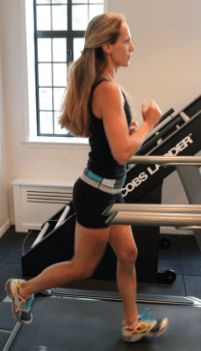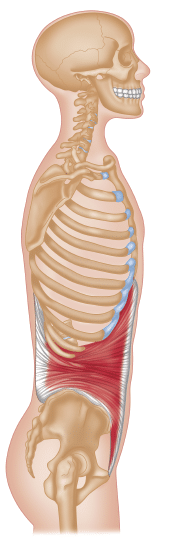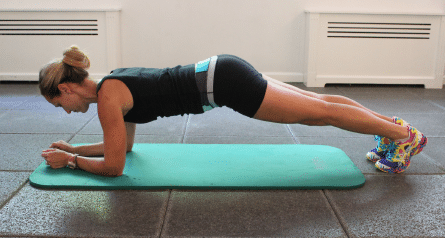
Watch any race whether it be a 5K or a marathon and you’re bound to see quite a few runners that have substantial inward curves in their low backs. This posture is termed, ‘Lumbar Lordosis (LL)’ While this posture is not specific to runners, this demographic is what we’ll be addressing in this post.
What Is It?
As noted above, LL can and does occur in non-runners and is considered a postural/biomechanical issue. The primary identifying traits of LL are a forward (anterior) tilted pelvis and consequently an inward rounding of the low back (lumbar spine). Visually, this often looks like someone is pushing out the chest and sticking their butt out at the same time. While there are medical reasons for LL, this post will discuss reasons that are based around the musculature as it pertains to imbalances.
What Causes It?
There are a multitude of reasons why a runner might have LL such as tight calves, hip flexors and low back, weak hamstrings. However, it is often fatigue that is the main reason for LL appearing in runners. If you look at a runner’s form after 1 mile and again after 20 miles in a marathon, their form will likely look different – and probably not in a good way!

At the core of it (pun intended), a weak core is often to blame for LL in runners. Specifically in regard to LL, when we reference ‘core,’ we’re referring to the deep abdominal stabilizers such as the transverse abdominis (TA). The TA is a hoop like muscle which provides stability to the midsection of the body and is like the body’s natural weight belt when engaged properly.
What Happens?
When the core of a runner becomes fatigued, the muscular support system of the runner weakens. It’s akin to taking away the support structure of a building such as load bearing walls – if enough of a building’s support structure is taken away, the building will start to buckle and may eventually collapse.
When the core of a runner is either not strong enough to support the intensity of the effort and/or is weakened due to fatigue, the form the runner will likely become compromised. Specifically in regard to LL, when the TA can no longer effectively brace the core of a runner, the low back ‘switches’ from depending on the core musculature (including the TA) for support to the spine. Since the spine is not designed to function independently of the musculature, it will bend. This is perhaps an overly simplistic explanation of why LL occurs in runners but hopefully it illustrates the main issue.
What Can I Do About It?
First and foremost, strengthen your deep core stabilizers – in particular your TA. While there are endless exercises for this, a great one is a plank.

A progression from a basic plank is a plank with single arm lifts. The ‘difficulty’ of this exercise can be varied by how wide the feet are positioned – the closer the feet, the more difficult the exercise is. The critical aspect of this exercise is to not allow the hips to rotate when lifting the arm. So brace the core before lifting the arms.
Last but not least, run at an intensity level and distance that does fatigue your core musculature to the point that it can no longer provide adequate support. This is be accomplished by progressing your training and racing so that your body adapts in a safe and progressive manner to handle the increasing training loads.
Learn more about our certifications and to get $50 OFF the purchase price!
Download the UESCA Triathlon Coach Course Overview/Syllabus
Download the UESCA Running Coach Course Overview/Syllabus
Download the UESCA Ultrarunning Coach Course Overview/Syllabus
Download the UESCA Cycling Coach Course Overview/Syllabus
Download the UESCA Endurance Sports Nutrition Course Overview/Syllabus








